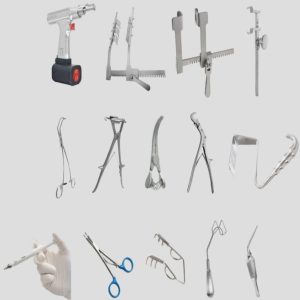The Ultimate Guide to Ophthalmic Equipment: Types, Uses, and Benefits
In the rapidly evolving field of ophthalmology, the utilization of advanced ophthalmic equipment is crucial for accurate diagnosis and effective treatment. Our comprehensive guide explores the various types of ophthalmic equipment, their specific uses, and the benefits they bring to both practitioners and patients.
Introduction to Ophthalmic Equipment
Ophthalmic equipment encompasses a wide range of devices used by eye care professionals to diagnose, monitor, and treat eye disorders. These tools are essential in providing high-quality eye care and improving patient outcomes.
Diagnostic Ophthalmic Equipment
1. Slit Lamp Biomicroscope
The slit lamp biomicroscope is a fundamental instrument in any ophthalmology practice. It allows for detailed examination of the anterior segment of the eye, including the cornea, iris, and lens. The device uses a high-intensity light source that can be adjusted to create a thin beam, providing a magnified view of the eye’s structures.
Key Benefits:
- Enhanced visualization of eye structures
- Accurate detection of eye conditions such as cataracts and glaucoma
- Essential for contact lens fitting and evaluation
2. Ophthalmoscope
Ophthalmoscopes are handheld devices used to examine the interior structures of the eye, particularly the retina. There are two main types: direct and indirect ophthalmoscopes.
Direct Ophthalmoscope:
- Provides a detailed view of the retina
- Used for routine eye exams
Indirect Ophthalmoscope:
- Offers a wider field of view
- Essential for diagnosing retinal detachments and peripheral retinal diseases
Key Benefits:
- Non-invasive examination of the retina
- Critical for diagnosing a wide range of retinal conditions
3. Optical Coherence Tomography (OCT)
OCT is a non-invasive imaging test that uses light waves to take cross-section pictures of the retina. It provides detailed images of the retina’s layers, allowing for precise mapping and measurement of their thickness.
Key Benefits:
- High-resolution imaging of retinal structures
- Early detection of diseases such as macular degeneration and diabetic retinopathy
- Monitoring of disease progression and treatment response
4. Visual Field Analyzer
A visual field analyzer assesses a patient’s central and peripheral vision. It is crucial for detecting and monitoring glaucoma, retinal diseases, and neurological disorders.
Key Benefits:
- Comprehensive assessment of visual function
- Early detection of visual field defects
- Monitoring of glaucoma progression
Surgical Ophthalmic Equipment
1. Phacoemulsification Machine
Phacoemulsification machines are used in cataract surgery to emulsify the cloudy lens and remove it through a small incision. This equipment has revolutionized cataract surgery, making it safer and more efficient.
Key Benefits:
- Minimally invasive surgery
- Faster recovery times for patients
- High success rates in restoring vision
2. Laser Systems
Laser systems, including excimer and femtosecond lasers, are used in various ophthalmic procedures such as LASIK and cataract surgery. These systems offer precision and safety in surgical interventions.
Excimer Laser:
- Used in refractive surgeries like LASIK
- Reshapes the cornea to correct vision
Femtosecond Laser:
- Utilized in cataract surgery and corneal transplants
- Provides precise incisions and reduces surgical risks
Key Benefits:
- Precision in surgical procedures
- Reduced risk of complications
- Improved patient outcomes
Benefits of Advanced Ophthalmic Equipment
Advanced ophthalmic equipment offers numerous advantages that enhance the quality of eye care.
1. Improved Diagnostic Accuracy
The use of sophisticated diagnostic tools ensures accurate detection of eye conditions, enabling timely and effective treatment.
2. Enhanced Patient Safety
Modern ophthalmic devices are designed with patient safety in mind, reducing the risk of complications during diagnostic and surgical procedures.
3. Efficiency in Eye Care Delivery
Advanced equipment streamlines workflows, allowing for quicker and more efficient patient care. This leads to higher patient throughput and better resource utilization.
4. Better Patient Outcomes
With precise diagnosis and treatment capabilities, advanced ophthalmic equipment significantly improves patient outcomes, ensuring better vision and overall eye health.
Conclusion
Investing in high-quality ophthalmic equipment is essential for any eye care practice committed to providing the best care for its patients. By staying updated with the latest advancements in ophthalmic technology, practitioners can ensure accurate diagnosis, effective treatment, and enhanced patient satisfaction.
Go to Check – https://rigorinstruments.com/ophthalmic-surgical-instruments/






